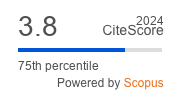Article | Open Access
Maximising the Degree of User Choice. A Simple Tool to Measure Current Levels of Quality of Life in Urban Environments
| Views: | 3672 | | | Downloads: | 1736 |
Abstract: In this article, we present a simple methodology based on Max-Neef, Elizalde and Hopenhayn (1991) “human scale development” paradigm to measure current levels of Quality of Life (QoL) for urban environments. In this procedure, fundamental human needs form the study domains. We assess their fulfilment with a set of questions reflecting the subjective dimension of QoL. We sort questions into needs after two consecutive processes: a qualitative one involving local communities and/or expert groups, and a quantitative one involving the definition of weights for each question and per need. Complementarily, we add objective indicators to reflect the objective dimension of QoL. This way, we make possible a comparison between the two dimensions and a definition and computation of an integrative QoL. We argue that this method can be used to define more holistic urban quality indexes to improve decision making processes, policies and plans. It can also be seen as a tool to enhance bottom-up approaches and processes of urban analysis to create more liveable places for the dwellers.
Keywords: human scale development; integration; need satisfaction; quality of life; urban environments
Published:
© Ioanna-Anna Papachristou, Marti Rosas-Casals. This is an open access article distributed under the terms of the Creative Commons Attribution 4.0 license (http://creativecommons.org/licenses/by/4.0), which permits any use, distribution, and reproduction of the work without further permission provided the original author(s) and source are credited.


